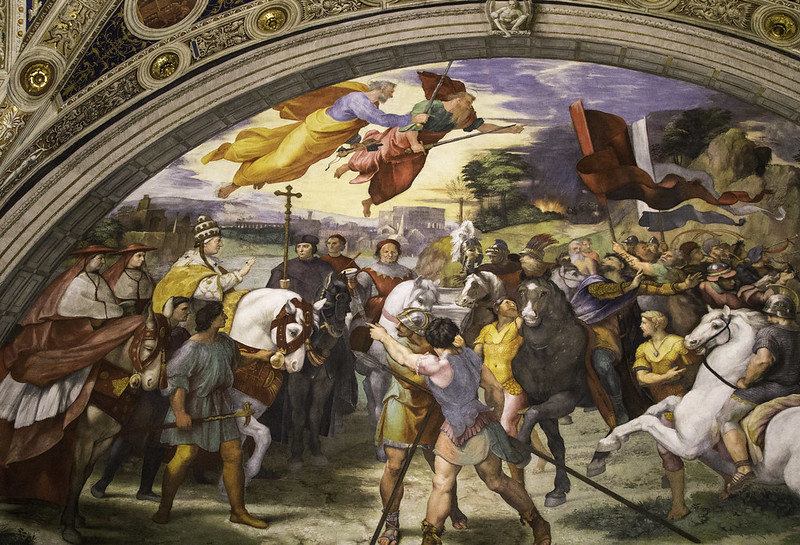What’s in a Name? The Story Behind Pope Leo XIV and the Legacy of “Leo”
On May 8, 2025, white smoke rose from the Sistine Chapel, announcing the election of Pope Leo XIV. As pilgrims packed St. Peter’s Square and the world searched for the meaning behind the Pope Leo name, it became clear that this choice wasn’t just symbolic—it was historic. With a focus on tradition, strength, and reform, the new pope’s name bridges the past and present in a way that invites deeper reflection—and for many, a renewed interest in pilgrimage to Rome.
Who Is Pope Leo XIV?
Born Robert Francis Prevost on September 14, 1955, in Chicago, Illinois, Pope Leo XIV is the first American-born pontiff. He grew up in the Chicago suburb of Dolton and joined the Order of Saint Augustine, professing solemn vows in 1981.
Prevost spent over two decades in Peru, where he served as a parish priest and seminary professor. He later became Bishop of Chiclayo, serving in that role from 2015 to 2023. He became a Peruvian citizen in 2015 and returned to Rome in 2023.
That year, Pope Francis appointed him Prefect of the Dicastery for Bishops—a key Vatican leadership position. [Wikipedia]
The new pope speaks multiple languages, including English, Spanish, Italian, French, and Portuguese [Catholic News Agency]. His family background includes French ancestry on his father’s side and Creole and Dominican roots through his mother. These diverse cultural influences—linked to historically Catholic regions—mirror the global Church he now leads.
Why the Name “Leo”?

Thirteen popes before him chose the name Leo, most notably Leo I—known as “Leo the Great”—who served from 440 to 461. A Doctor of the Church, Leo I defended Rome from Attila the Hun and helped shape the role of the papacy in both spiritual and political terms. His legacy endures as one of strength in faith and clarity in doctrine.
Pope Leo XIV may have drawn inspiration from Leo XIII, who reigned from 1878 to 1903 and issued the groundbreaking encyclical Rerum Novarum, addressing social justice, workers’ rights, and modern Catholic social teaching.” According to USA Today, the name “Leo” signals strength, tradition, and a message of resilience and continuity.
Popular Papal Names and a Historic Choice
The most frequently used papal names include John (23 times), Gregory (16), and Benedict (16). Pope Francis set a new precedent when he chose a name never used before, reflecting his personal and pastoral vision. Pope Leo XIV, in contrast, revives a powerful lineage—his name marking the first use of “Leo” since 1903.
Explore our related features:
- Pope Francis: 1936–2025
- Papal Conclave 2025: What Happens Next
- Papal Transition: What to Expect in Rome
Rome Travel Tips and Jubilee 2025
The election of a new pope coincides with Jubilee 2025, making Rome an even more spiritually and historically significant destination this summer. Pilgrims are already planning trips around major Masses, general audiences, and events tied to the new pontificate. Summer 2025 will likely draw record crowds to Rome.
Key upcoming events include:
- May 10 – Meeting with Cardinals
- May 11 – First Regina Caeli from the Central Loggia of St. Peter’s Basilica
- May 12 – Meeting with international press
- May 16 – Meeting with diplomatic corps
- May 18 – Inaugural Mass in St. Peter’s Square at 10:00 AM
- May 20 – Taking possession of the Papal Basilica of St. Paul Outside the Walls
- May 21 – First General Audience
- May 24 – Meeting with Vatican City staff
- May 25 – Taking possession of the Basilicas of St. John Lateran and Santa Maria Maggiore
For the full schedule, visit Vatican News.
Where Is Pope Francis Buried?
Pope Francis passed away on April 21, 2025, and chose the Basilica of Santa Maria Maggiore as his final resting place. His deep devotion to the Virgin Mary defined his pontificate, making the basilica a fitting location. Located on Rome’s Esquiline Hill, it now serves as a pilgrimage destination for those wishing to pay their respects..
Looking Ahead: A Pontificate Rooted in Legacy
As the Church begins a new chapter, the Pope Leo name echoes a legacy of leadership, faith, and resilience. Whether you’re a devout pilgrim or a curious traveler, this historic moment invites deeper understanding of the Church’s global mission—and Rome’s place at the heart of it.Looking for Jubilee planning tips? Read our full Jubilee 2025 Travel Guide for insight into when to visit, what to expect, and how to embrace the spirit of this extraordinary year.


